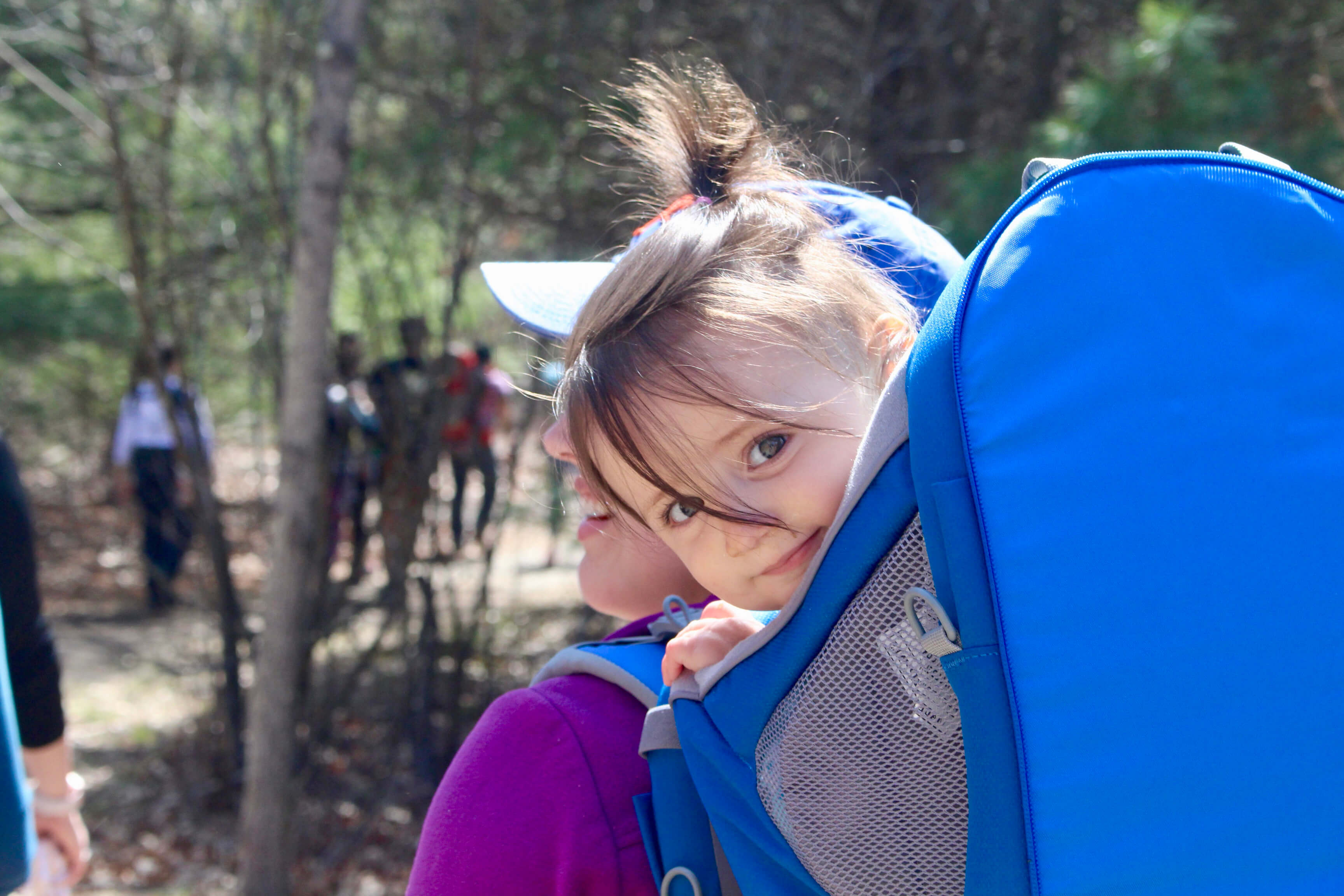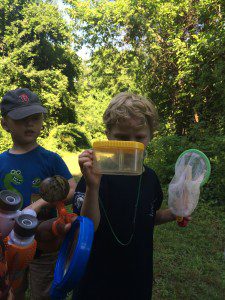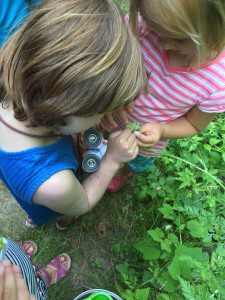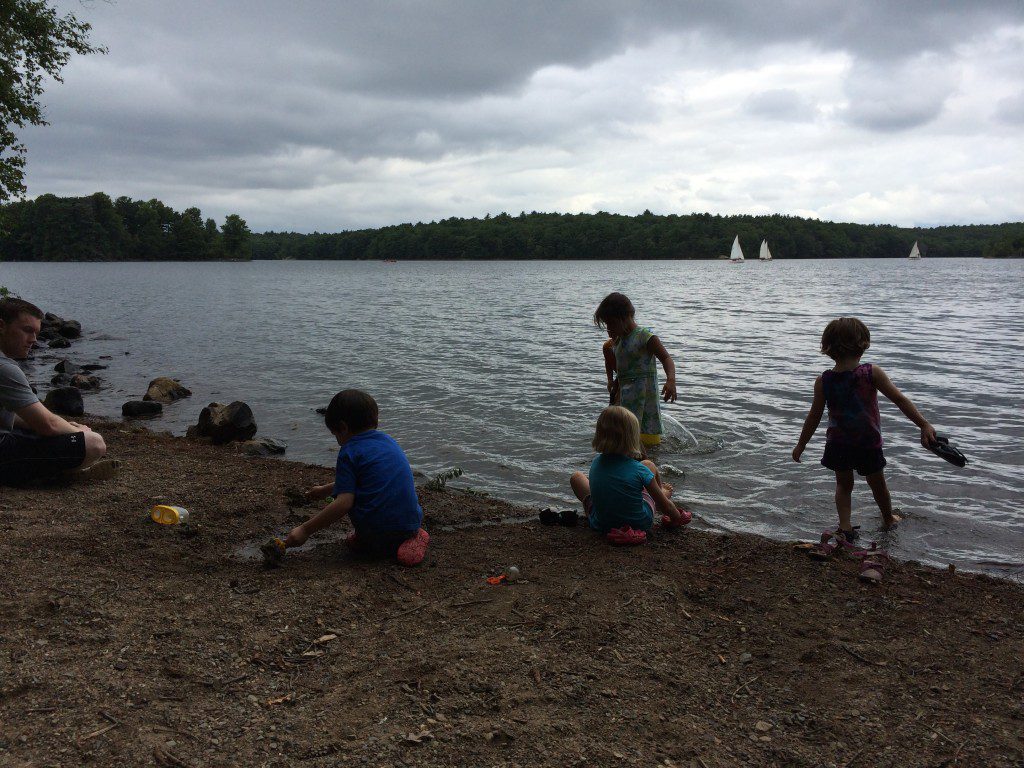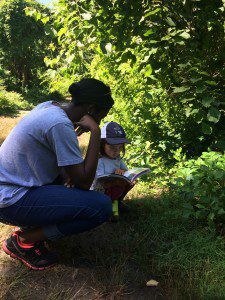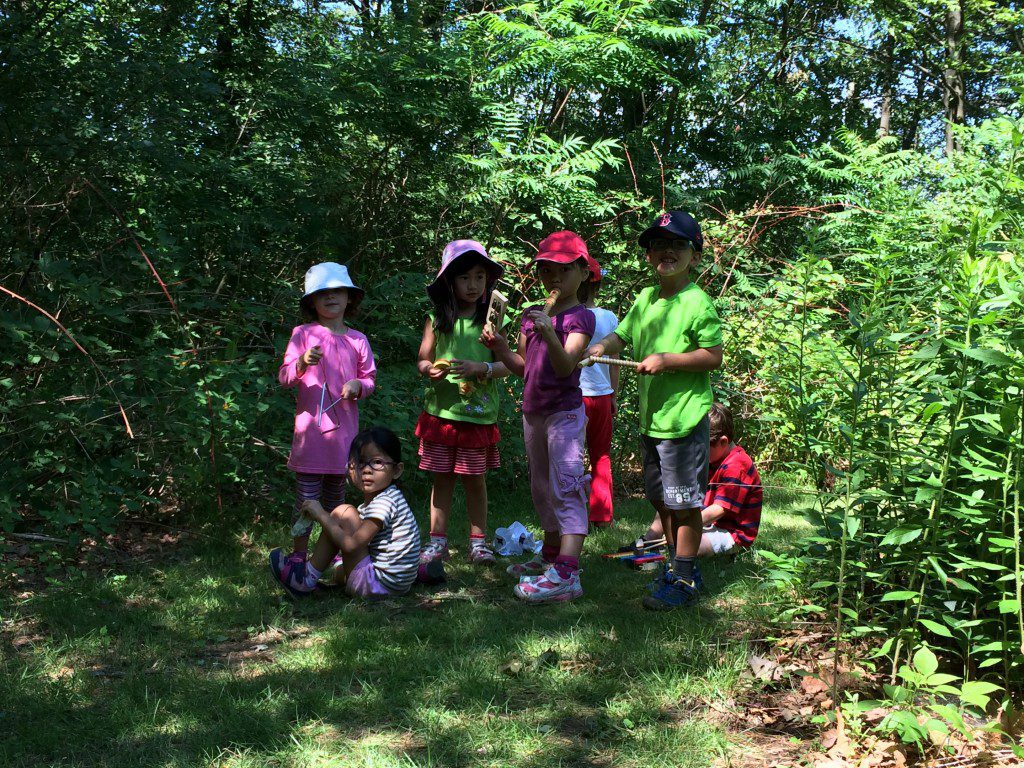Growing up on Cape Cod, I spent at least a third of my childhood playing in the woods. My dad is a land surveyor and my mom and avid walker and horseback rider, so the trails we’d hike on weekends varied in length and location, and each trek came with off-the-cuff information about our local history, location of town boundaries, emergence of spring flowers, and insider information about the best places to look for pheasant, quail, deer, and horse tracks.
Accompanied by dedicated volunteer co-leaders Laurie and Dennis, I am honored to lead the weekly Babes in the Woods hikes, a tradition now 15 years strong. While many of you know that Babes is a hike for parents and their babies, what many may not know is that the hike meets year-round. What I love most about these hikes is that the Fells is a place where, like the Cape, you can easily become lost in your surroundings, especially in the calm of winter. And while the outdoors is a perfect place for solitary reflection, I think nature is meant, ultimately, to be shared.
What I’ve found the most spectacular over the last six months has been the change of the trails as one season becomes the next. We tend to rotate our hikes between five or six trails and amend them based on weather. It’s been amazing to see that a trail we hiked in July is now almost unrecognizable as the same path and the distance over which you can see now that the trees are bare.
Our winter hikes have transitioned from an hour-long hike to an hour and a half long jaunt with a short break midway for the dissemination of food and water to our younger set, who have ranged in age from four weeks to over two years. The new school of nature education lauds the return of children to unexplored outdoor spaces and away from electronic devices. Babes in the Woods exposes children to their natural surroundings at about as early an age as possible. Even the babies who slept through the entire hike in their earliest weeks of life are now keeping themselves awake and investigating with their eyes the canopy of trees, sky, and clouds under which we pass. I can only imagine the positive impact this will have on these babes as they grow into nature-loving toddlers.
Our group is dynamic; Most of the hikers who joined us in early June have returned to work, their babies to daycare, while others have been kept away by the cold. We’ll head into January with our small but intrepid group of regulars, a friendly and diverse mix of moms, dads, and guardians. We’ll hike through the cold and, most likely, some snow and watch as the flora and fauna make their gradual shifts through winter into spring. At the point at which we start to see some green buds and crocus points, I imagine we’ll begin to meet some new recruits and see a few returnees who will be ready to set out with us again in the milder temperatures. Whether you’re a brand new parent or a fourth-year hiker, we look forward to having you along!
~Gillian Badwan
